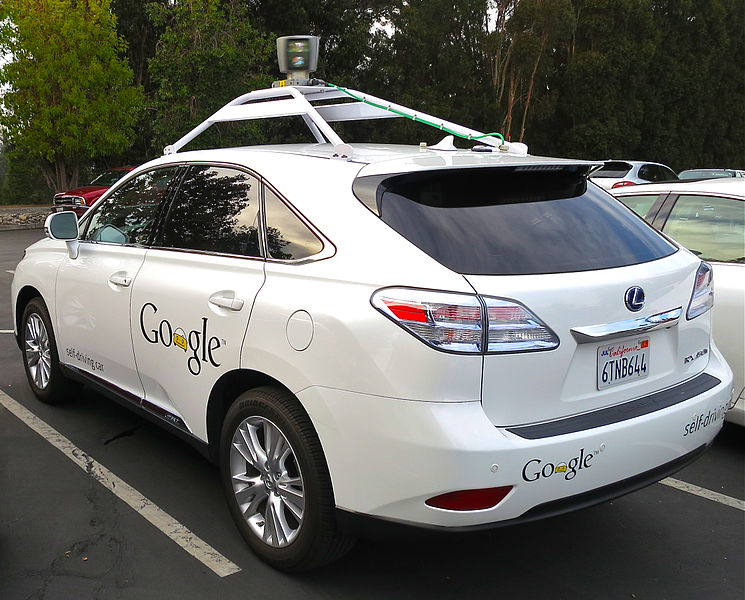Felix Salmon writes about the possible implications of driverless cars.
While I’ve generally been a fan of just about any alternative to the automobile, now I’m not so sure: I think that smart car technology is improving impressively, to the point at which it could be the most promising solution, especially in developed parts of the world like California.
One reason is simply fiscal. Projects like the self-driving car, and the Sartre platooning project in Europe, move the costs of new technology onto companies (Google) and individuals (people buying smart cars). As such, while the total amount of money spent might well be enormous, the money doesn’t need to be spent up-front by any state or national government. That stands in stark contrast, of course, to rail projects, which cost billions of dollars up front; if they ever do pay for themselves, they do so only very slowly.
It makes perfect sense for dense urban areas to invest in subway systems, of course — as China is doing; India should follow suit. A pedestrian-friendly city with a great bike-path network and a fast subway system is basically any urbanist’s dream, both energy-efficient and reasonably low-tech. But between cities and suburbs, or between cities, you need other ways of getting around. And here there are real choices to be made, between rail and roads. Or rather, given that roads are necessary, do you build roads and railways, or can you solve all your problems with roads alone?
[…]
If and when self-driving cars really start taking off, it’s easy to see where the road leads. Firstly, they probably won’t be operated on the owner-occupier model that we use for cars today, where we have to leave our cars parked for 97% of their lives just so that we know they’re going to be available for us when we need them. Given driverless cars’ ability to come pick you up whenever you need one, it makes much more sense to just join a network of such things, giving you the same ability to drive your car when you’re at home, or in a far-flung city, or whenever you might normally take a taxi. And the consequence of that is much less need for parking (right now there are more than three parking spots for every car), and therefore the freeing up of lots of space currently given over to parking spots.
What’s more, the capacity of all that freed-up space will be much greater than the capacity of our current roads. Put enough platoons and self-driving cars onto the road, and it’s entirely conceivable that the number of vehicle-miles driven per hour, on any given stretch of road, could double from its current level, even without any increase in the speed limit. Then, take account of the fact that vehicle mileage will continue to improve. The result is that with existing dumb roads, we could wind up moving more people more miles for less total energy expenditure in cars — even when most of those cars continue to have just one person in them — than by forcing those people to cluster together and take huge, heavy trains instead.
This vision creates a dilemma, when we start facing choices about building rail lines or new suburbs. We’re not in a self-driving-car utopia yet, and the transportation problems we have are both real and solvable using rail. So do we use the tools we have, or do we wait and hope that future technology will solve our problems in a more efficient way?
Via Kevin Drum, who is particularly bullish about this. The implication here is that maybe, just maybe, we don’t really need all that extra road capacity that TxDOT says we need but can’t pay for and for which we’re currently groping around for funding sources. Sure, this is all pie in the sky, but driverless cars do exist, and they’re surely going to be a disruptive force. Predicting the future, especially that far out, is hard, you know? Just something to keep in mind, that’s all.


can you connect the dots for me, kuff? i am missing how more miles logged by busier (driverless) cars means less need for roads.
Joel,
I encourage you to read the Salmon and Drum articles, but the reasoning boils down to a couple of things:
1. Driverless cars can react more quickly and safely to road conditions, so a high volume of traffic can move at a higher speed, thus reducing the need to add capacity.
2. Driverless cars will make car pooling more attractive since you will be able to schedule pickup more precisely and won’t need to find others to share the ride with.
The point that both Salmon and Drum make is that our own cars are idle the vast majority of the time. Driverless cars don’t need to sit in a parking lot waiting for you to use them – they can be deployed to others who need them when they need them. That will make car sharing much more attractive – why own when you can pay a much smaller amount to have a car at your service when you need it? – and car pooling follows from there.
Does that help? The bottom line is that driverless cars, once they are in wide use, will change the way people use cars. The effects could be profound.
Pingback: Where are all the teenage drivers? – Off the Kuff